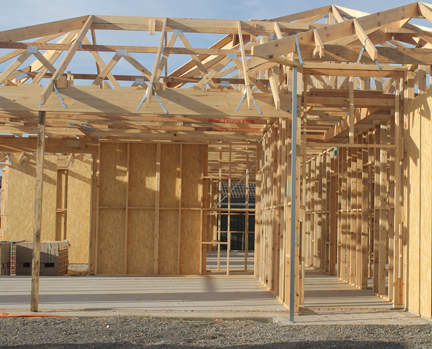
Housing price growth slowed in the September quarter as unit values in Melbourne and Brisbane hit the brakes, the latest Australian Bureau of Statistics figures showed. Source: Australian Financial Review
In a weaker-than-expected performance, quarter-on-quarter growth in dwelling values slowed to 1.5% nationally from 2% in the June quarter, the figures showed.
The median forecast of analysts surveyed by Bloomberg was for a 2.5% increase.
While price growth in Sydney was little changed from the previous quarter, the rate of increase slowed in Melbourne from 2.7% to 1.7% and in Brisbane from 1.1% to just 0.2%.
Melbourne and Brisbane have long been expected to suffer falls in apartment values as record numbers of new units complete and come due for settlement, but the figures do not spell disaster across the board.
Developers accept that prices of some apartments will come off, but say that it varies according to product type.
Demand remains strong for good quality units in good locations, financier Qualitas said.
The figures, which were well below price growth figures reported by CoreLogic but closer to those of Fairfax Media-owned Domain Group, suggested the residential property market has cooled, AMP Capital chief economist Shane Oliver said.
The ABS numbers confirm other indications that rising apartment settlement numbers are weighing on price growth.
Home values fell 1.5% in Melbourne last month, CoreLogic figures showed.
Price growth of established houses slowed in both the Victorian and Queensland capitals, but the bigger change came in so-called attached dwellings – apartments, townhouses and semi-detached dwellings.
In Melbourne, prices rose just 0.3% after a 1.3% quarterly gain in June.
In Brisbane, prices turned negative for the first time in two years, falling 0.6% after June’s 1% increase. The last time attached dwelling prices fell in the Queensland capital was the December quarter of 2014, when they shed 0.8%.
Prices in Sydney rose 2.6%, quarter-on-quarter, following a 2.8% gain in the three months to June.
Price growth slowed in Canberra to 0.8% from 2.2%.
Hobart was the outperformer, with price growth jumping to 2.3% from 0.7%.
Adelaide ticked up to 0.9% from 0.8%.
Prices in Perth and Darwin remained in negative territory. Perth prices fell 1.6%, faster than June’s 1.2% decline.
In Darwin, the rate of decline halved to 1.2% from 2.4% in the second quarter.
From a year earlier, prices rose 3.5% in the September quarter, down on June’s 4.1% and the slowest pace of growth since the first quarter of 2013, when the overall residential price index rose 3.1%.
The average price of residential dwellings rose $8000 to $631,000 and the number of residential dwellings rose by 51,900 to 9,755,400 in the September quarter 2016, the ABS figures showed.







